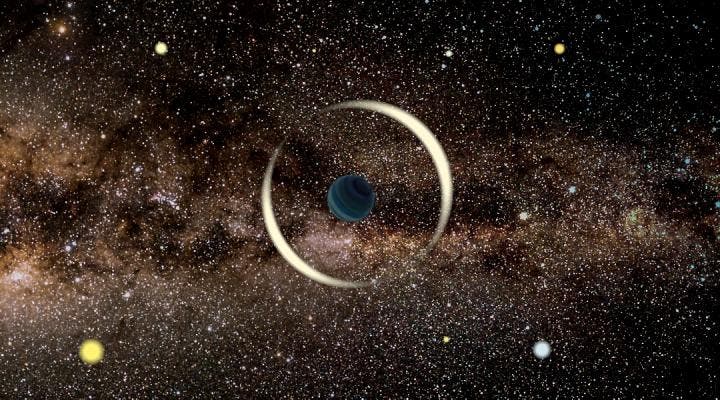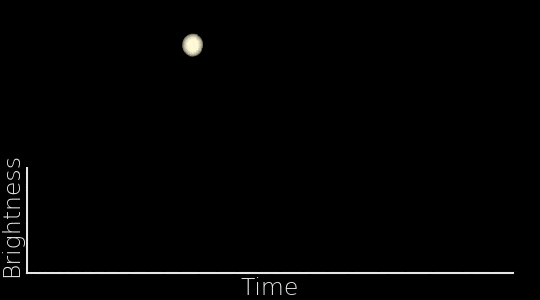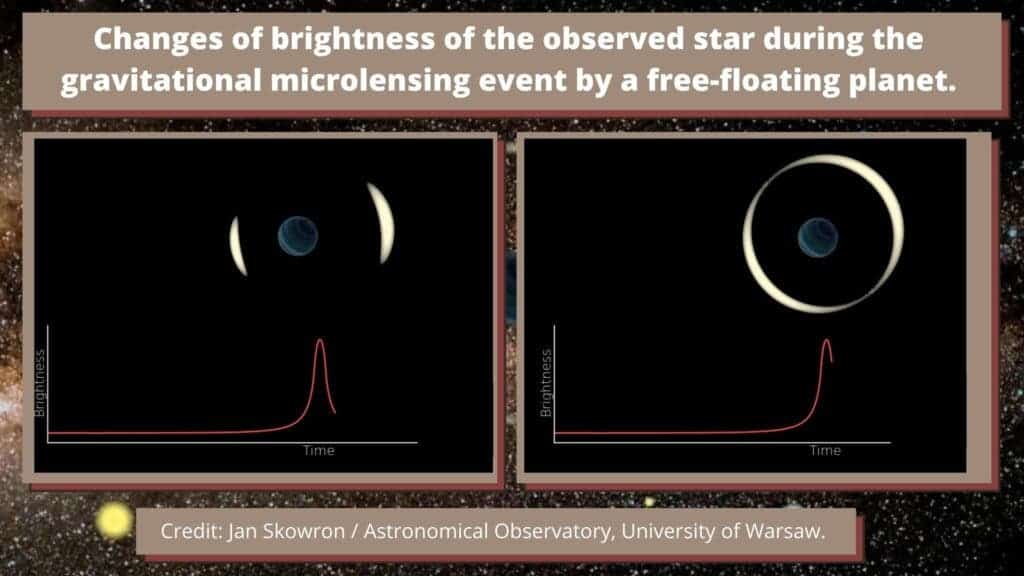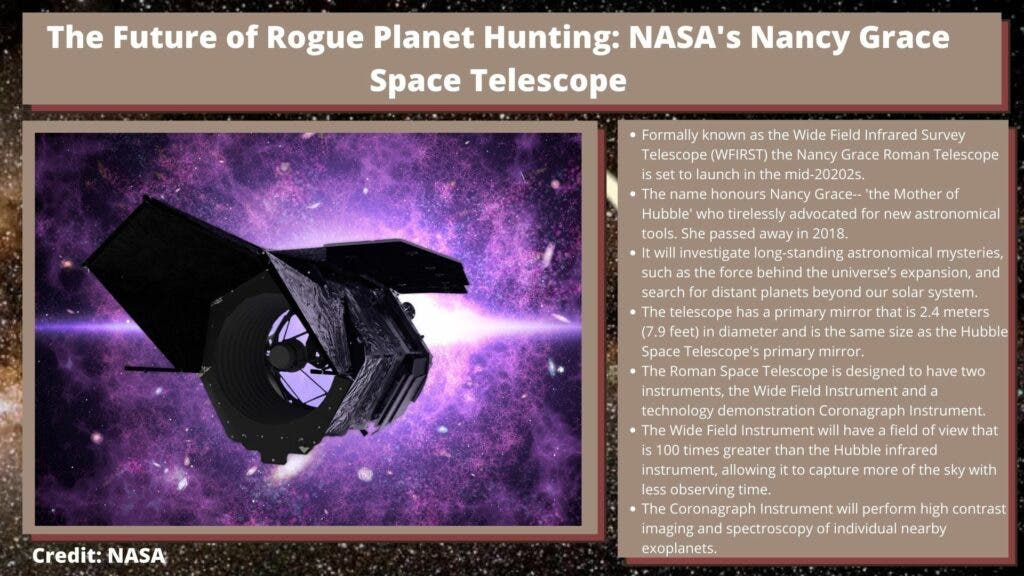Researchers believe that our galaxy is teeming with cosmic orphans, planets wandering free of a parent star. Though common, these rogue planets are difficult to spot, especially when they are in the size range of the earth.
Despite this difficulty; an international team of astronomers including Przemek Mróz, a postdoctoral scholar at the California Institute of Technology (Caltech) and Radosław Poleski from the Astronomical Observatory of the University of Warsaw, have spotted what they believe to be a free-floating planet with a size and mass somewhere in the range of Mars and Earth, wandering the Milky Way.
The discovery represents a major step forward in the field of exoplanet investigation as it is the first earth-sized ‘rogue planet’ ever observed.

“We found a planet that seems extremely lonely and small, far away in the Universe,” Poleski tells ZME Science. “If you can imagine, Earth is in a sandbox surrounded by lots of other planets, and light from the Sun. This planet isn’t. It’s truly alone.”
The rogue planet the team found — OGLE-2016-BLG-1928 — is believed to be the smallest free-floating planet ever discovered. It was found in data collected by Optical Gravitational Lensing Experiment (OGLE), a Polish astronomical project based at the University of Warsaw. Previously discovered rogues — such as the first-ever recorded free-floating planet also found by OGLE in 2016 — are closer in size to Jupiter.
“We discovered the smallest free-floating planet candidate to date. The planet is likely smaller than Earth, which is consistent with the predictions of planet-formation theories,” Mróz — lead author of the team’s study published in Astrophysical Journal Letters — explains to ZME Science. “Free-floating planets are too faint to be observed directly — we can detect them using gravitational microlensing via their light-bending gravity.”
The Gravity of the Situation
The team spotted this wandering planet using the technique of gravitational microlensing, often utilised to spot exoplanets — planets outside our solar system. Exoplanets can’t often be observed directly, and when they can it’s a result of interaction with radiation from their parent star — for example, the dimming effect exoplanets have when they cross in front of their star and block some of the light it emits. Clearly, as rogue planets don’t have a parent star, they don’t have these interactions, making micro-lensing events the only way of spotting them.
“Microlensing occurs when a lensing object — a free-floating planet or star — passes between an Earth-based observer and a distant source star, its gravity may deflect and focus light from the source,” Mróz explains to ZME Science. “The observer will measure a short brightening of the source star, which we call a gravitational microlensing event.”

Credit: Jan Skowron / Astronomical Observatory, University of Warsaw.)
Mróz continues by explaining that the duration of microlensing events depends on the mass of the object acting as a gravitational lens. “The less massive the lens, the shorter the microlensing event. Most of the observed events, which typically last several days, are caused by stars,” Mróz says. “Microlensing events attributed to free-floating planets usually last barely a few hours which makes them difficult to spot. We need to very frequently observe the same part of the sky to spot brief brightenings caused by free-floating planets.”

By measuring the duration of a microlensing event and shape of its light curve astronomers can estimate the mass of the lensing object. That is how the team were able to ascertain this free-floating planet is approximately Earth-sized. “Hence, we can discover very dim objects, like black holes, or free-floating planets,” says Poleski. “We found it an event, which has a timescale of 41 minutes. And it’s the shortest event ever discovered.”
Poleski explains that the lack of any other lensing body in the system told the team that it is a very strong candidate for a free-floating planet. He adds: “We know it’s a planet because of the very short timescale and we think it’s free-floating because we don’t see any star next to it.”
Going Rogue. How Free-Floating Planets Come to Wander the Universe Alone
Astronomers believe that free-floating planets actually formed in protoplanetary disks around stars in the same way that ‘ordinary’ planets are. At some point, they are ejected from their parent planetary systems, probably after gravitational interactions with other bodies, for example, with other planets in the system.
“Some low-mass planets are expected to be ejected from their parent planetary systems during the early stages of planetary system formation,” says Mróz. “According to planet formation theories, most of the ejected planets should be smaller than Earth. Theories of planet formation predict that typical masses of ejected planets should be between 0.3 and 1.0 Earth masses. Thus, the properties of this event fit the theoretical expectations.”
These free-floating rogue planets are believed to be fairly common, but researchers can’t be certain because they are so difficult to spot. “Our current studies indicate that the frequency of low-mass–in the Earth to super-Earth-mass range–free-floating or wide-orbit planets is similar to that of stars — there are about two-five such objects per each star in the Milky Way,” says Mróz. “These numbers are very uncertain because they are based on a few sightings of short-timescale microlensing events. However, if free-floating/wide-orbit planets were less frequent than stars, we would have observed much fewer short-timescale events than we do.”
The researcher adds that though these objects are relatively common, the chances of observing microlensing events caused by them are still extremely small. “Three objects — source, lens, and observer — must be nearly perfectly aligned,” Mróz says. “If we observed only one source star, we would have to wait almost a million year to see the source being microlensed.”
In fact, one of the extraordinary elements of the team’s study is that such a short duration lensing event wasn’t believed to be observable given the sensitivity of the current generation of telescopes.
“The surprise, in general, was that with current technology we could define such a short time event,” Poleski says. “It’s especially surprising if you beat the previous record by a factor of few.”
The Nancy Grace Roman Telescope and Future Rogue Reconnaissance
For Mróz, there are still questions that he would like to see answered about OGLE-2016-BLG-1928. Primarily, confirming that it definitely is a free-floating planet.
“We aren’t fully sure whether our planet is free-floating or not. Our observations rule out the presence of stellar companions within 10 astronomical units–930 million miles–of the planet, but the planet may have a more distant companion,” Mróz says. “Let’s imagine that we’re observing microlensing events by a doppelganger of the Solar System. If Jupiter or Saturn caused a microlensing event, we would see a signature of the Sun in the microlensing event light curve. However, microlensing events by Uranus or Neptune would likely look like those of free-floating planets, because they are very far from the Sun.”
Fortunately, Mróz says that should be possible to distinguish between free-floating and wide-orbit planets. “The lens is moving relative to the source star in the sky and — a few years after the microlensing event — the lens and source should separate in the sky,” the researcher elaborates. “If the lens has a stellar companion, we will see some excess of light at its position. If it is a free-floating planet, we will not.”
Whilst this method may seem simple, Mróz says we cannot apply it now, because the existing telescopes are not powerful enough. This includes the instrument that conducted the long-term observations that gave rise to the OGLE sky survey–the data from which the team found the micro-lensing event OGLE-2016-BLG-1928.
“[The discovery of OGLE-2016-BLG-1928] was part of the larger search for microlensing events in general, which we perform in a number of steps,” Poleski tells ZME. “In one step, I started looking at the wide orbit planets — planets similar to Uranus, or Neptune and on similar orbits. And while looking for those, I screened a list of candidate microlensing events in general and I found this one.”

Soon NASA’s Nancy Grace Roman Telescope will take over the search for microlensing events, but in the meantime, there is still data from OGLE and other projects to be examined. “We now have more data and other surveys are also collecting data. So we hope to analyze those,” Poleski says. “The longer-term future is the launch of the Nancy Grace Roman Space Telescope. It will be a telescope similar to the Hubble telescope, only with new infrared and infrared cameras and that camera field of view larger than the Hubble Space Telescope.
“One of the main projects for the Raman telescope will be to observe galactic bulge in search for microlensing planets, including free-floating planets.”
Mroz, P., Poleski, R., Gould, A. et al., ‘A terrestrial-mass rogue planet candidate detected in the shortest-timescale microlensing event,’ Astrophysical Journal Letters, [2020] DOI: 10.3847/2041–8213/abbfad


